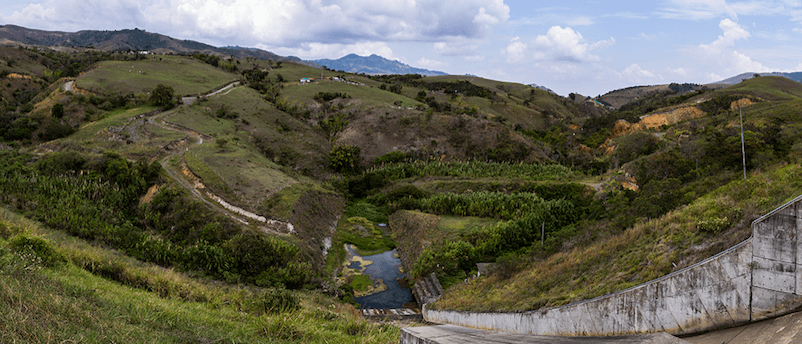
The water that accumulates in Colombia’s Andes Mountains provides fresh water for 75 percent of the country’s 47 million people. That water is also the life source for over 1,800 birds and 2 million species of flora and fauna. The incredible variety of plants and wildlife is why Colombia is ranked by most researchers as being within the 10 nations richest in biodiversity – or what some scientists even describe as “megadiverse.”
One environmental NGO, Rare, estimates that Colombia hosts approximately 10 percent of the world’s biodiversity. Yet water scarcity threatens quality of life for millions of Colombians, as well as the country's wildlife.
To that end, Rare embarked on several programs that aim to increase the country’s water security. And if these initiatives succeed, Rare and other nonprofits working in Colombia can show how this country, larger than the U.S. states of Texas and California combined, can lead on sustainable development and even the development of eco-tourism.
Rare’s efforts are centered in Valle de Cauca, a department (similar to a province or state) on Colombia’s central Pacific coast that is home to over 4.5 million people. Much of Valle de Cauca’s economy is dependent on agriculture, including sugar cane, coffee and commodities such as cotton and soy. The products grown here in part fuel the economy of the local capital, Buenaventura, a port city of 350,000 through which 60 percent of Colombia’s exports leave the country.
But the increasing production of these crops, and the surge of large industries such as paper and building materials, have increased water stress across the region. Rare’s goal is to implement water conservation practices that do not just serve an environmental purpose, but also become everyday practices amongst urban citizens, businesses and farmers.
In order to pay for these water conservation and remediation projects, the NGO will partner with Valle de Cauca’s environmental agency in convincing local businesses to contribute money to a local fund. Those monies in turn are distributed to farmers in the countryside so they can build fencing or adopt more sustainable farming practices. The results ensure that the water eventually flowing downstream is cleaner and more consistent, critical to Valle de Cauca as 80 percent of its people live in cities and towns.
The partnership between local regulators, water utilities and business is a win-win: Farmers benefit financially from becoming better stewards of the land, and businesses and residents can access to cleaner water. Valle de Cauca’s local government is also tackling other projects, including ensuring the region’s aquifers continue to serve as reliable sources of clean water.
Ensuring reliable sources of water ensure Valle de Cauca’s natural wonders can thrive, which also offer local options for employment as more citizens embrace sustainable economic development. After years of political turmoil, Colombia is safe and has long been ready to embrace visitors. This region showcases plenty of natural wonders, including the country’s newest national park, Uramba Bahía Málaga. The park is rich in mangroves and other marine ecosystems to which humpback whales from Antarctica migrate annually. A cleaner environment also ensures the way of life for citizens in remote villages such as San Cipriano, where largely Afro-Caribbean residents live surrounded by water pools and a wide variety of tropical birds. Even mainstream publications such USA Today are tout Colombia’s travel potential.
Efforts such as those launched by Rare offer hope that Colombia’s economic development can continue fairly for all while preserving an important part of the world’s biodiversity.
Image credit: Rare/Jason Houston

Leon Kaye has written for 3p since 2010 and become executive editor in 2018. His previous work includes writing for the Guardian as well as other online and print publications. In addition, he's worked in sales executive roles within technology and financial research companies, as well as for a public relations firm, for which he consulted with one of the globe’s leading sustainability initiatives. Currently living in Central California, he’s traveled to 70-plus countries and has lived and worked in South Korea, the United Arab Emirates and Uruguay.
Leon’s an alum of Fresno State, the University of Maryland, Baltimore County and the University of Southern California's Marshall Business School. He enjoys traveling abroad as well as exploring California’s Central Coast and the Sierra Nevadas.














